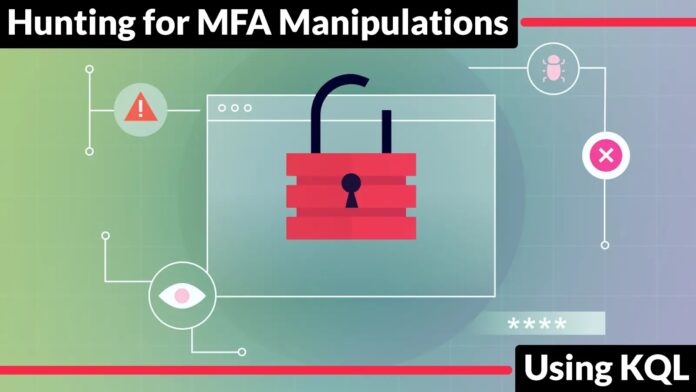[ad_1]
It is difficult to secure cloud accounts from threat actors who exploit multi-factor authentication (MFA) settings.
Threat actors usually alter compromised users’ MFA attributes by bypassing the requirements, disabling MFA for others, or enrolling rogue devices in the system.
They do so stealthily, mirroring helpdesk operations and making it hard to notice the noise of directory audit logs.
To protect themselves against this insidious attack vector on clouds, organizations need to strengthen monitoring and controls around MFA configuration changes.
Cybersecurity researchers at Microsoft recently detailed using the KQL (Kusto Query Language) to hunt for MFA manipulation.
With ANYRUN You can Analyze any URL, Files & Email for Malicious Activity : Start your Analysis
KQL Hunt For MFA Manipulations
Microsoft Entra audit logs record MFA setting changes, creating two entries: one with a descriptive activity name but lacking details and another “Update User” event showing modified properties in between much noise.
Analyzing these in the Entra portal is difficult due to data volume, especially for large tenants. However, Kusto Query Language (KQL) can simplify this task.
The cybersecurity analysts provided ready-to-use KQL queries for Azure Log Analytics and Microsoft Defender 365 Advanced Hunting to help analyze and detect MFA configuration changes in your own tenant.
.webp)
This allows enhanced monitoring even if audit logs are only retained for 30 days by default.
There are 3 MFA properties, and here below we have mentioned them:-
- StrongAuthenticationMethod
- StrongAuthenticationUserDetails
- StrongAuthenticationAppDetail
The aim is to detect alterations in a user’s registered MFA and default methods.
Researchers used KQL to filter out entries from the logs that may have timestamps, actors, and targets alongside their changed, old, and new values. Rows are generated for multiple changed properties.
The results indicate modified MFA settings by certain users, the people who altered them, and where further investigation should concentrate.
Security analysts compare OldValue and NewValue to detect changes in MFA details like added or modified emails and phone numbers. The output shows examples that may or may not be expected.
To hunt manipulations, they extend the query to look for MFA details added across multiple users within a timeframe, surfacing potentially rogue email addresses or phone numbers provisioned altogether.
They can also monitor for users switching phone numbers to a different country code by checking if the first 3 characters changed between old and new values.
These queries allow for identifying suspicious MFA configuration changes at scale.
DeviceName and DeviceToken identify devices registered for Authenticator App logins. Contrasting the OldValue and NewValue shows when users add or remove the devices.
Checking DeviceToken across users detects if one device is registered across multiple accounts, potentially indicating compromised accounts used by an attacker to persist multi-factor access.
While sometimes done by IT admins, reusing devices across accounts is generally insecure unless both belong to the same user.
As multi-factor authentication (MFA) becomes more widespread, attackers increasingly focus on MFA for initial access obtained through token hijacking or stealing and social engineering attacks.
Account authentication methods are frequently changed after a first compromise.
Knowing about Microsoft Entra Audit Logs of MFA modification events will help detect any suspicious activities related to MFA, such as illegal scenarios, across your organization, leading to quick investigation and remediation.
Looking for Full Data Breach Protection? Try Cynet's All-in-One Cybersecurity Platform for MSPs: Try Free Demo
[ad_2]
Source link
